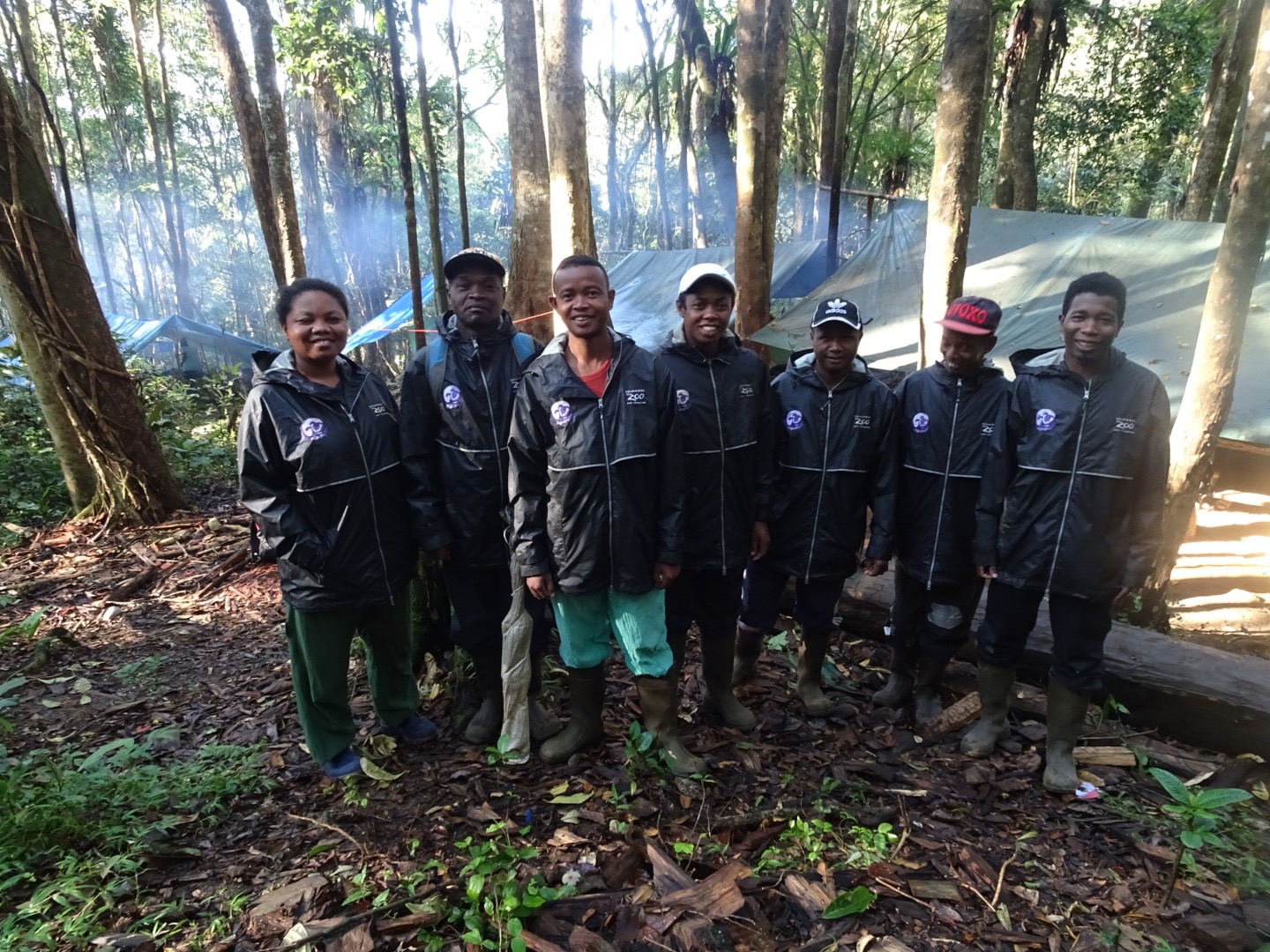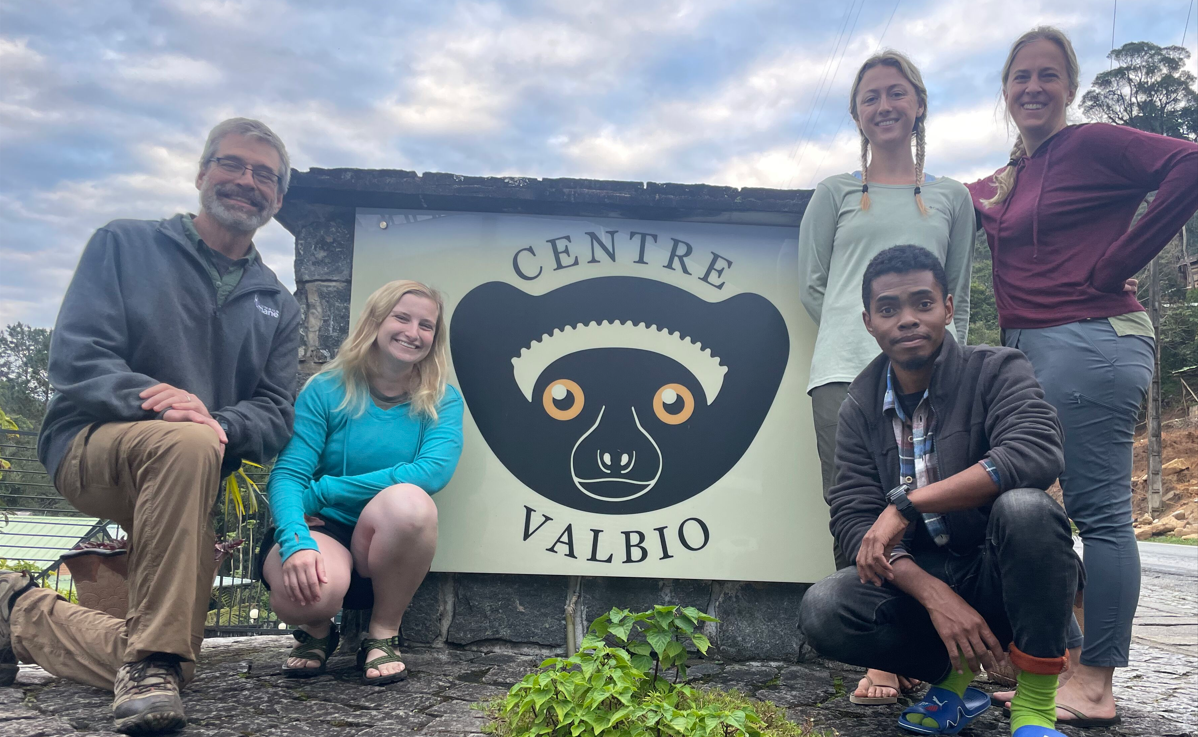Partners in Conservation
Learn about the Zoo’s financial commitment to holistic conservation efforts in Central Africa.

by Dr. Randy Junge, Vice President of Animal Health at the Columbus Zoo and Aquarium
I am sure that nearly everyone has heard of Madagascar, at least from the movie series featuring some misfit animals including my personal favorite, King Julian.
While entertaining, you may be surprised to learn that the portrayal of Madagascar is not entirely accurate. I will take GREAT PLEASURE in sharing the truth and reality of Madagascar, and I’m sure you will find it as amazing as I do!
Madagascar is the fourth largest island in the world, located about 250 miles off the east coast of Africa and 1200 miles south of the Equator. Evidence from plate tectonics show that eons ago, Madagascar, Africa, Antarctica, South America and some bits of India were one massive continent that drifted apart over millions of years. Madagascar separated from Africa 160 million years ago, and India 90 million years ago.
“So what?”, you may be thinking. Well, Madagascar remained isolated and uninhabited by humans until about 2,000 years ago. That means the plants and animals that drifted with, or to, Madagascar have evolved without competition from introduced species, humans, pets or agriculture.
What makes this unique environment considered threatened is the rapidly growing human population. Not permanently-inhabited until about 2,000 years ago, it remains an undeveloped country with most people living rurally on subsistence agriculture. As the population grows, more forest is cut for planting and for firewood, further reducing habitat for these endangered species.
As is true of many threatened species, zoos worldwide have focused a lot of attention and resources to helping in Madagascar.
My first involvement occurred more than 20 years ago when an institution I previously worked at sent me to provide veterinary assistance and training for a small zoo there. One thing led to another, and I have now been to Madagascar more than 30 times and assisted with projects from one end of the island to the other.
While the projects I participate in vary some, they are mostly focused around lemur health and nutrition, introduced diseases, and training.
I have worked with biologists and graduate students from many institutions, with a variety of lemur species and in many different protected areas. Over the years, I have fallen in love with the island, the people, and the wildlife. My trip in August 2023 was #32 for me, and I still get very excited about each and every trip. After this many years, it feels like home and family.
Some of the students that I have worked with are now wildlife vets in Madagascar or professors at universities teaching their students about conservation.
The project that I have been involved with over the last six years is with the Critically Endangered black-and-white ruffed lemur (Varecia variegata) in Ranomafana National Park in southeast Madagascar. The project, oddly, is named the Ranomafana Ruffed Lemur Project and is directed by Dr. Andrea Baden of Hunter College, New York. Dr. Baden completed her PhD dissertation research in Madagascar and has continued studying this population. This project is now the longest running project studying ruffed lemur ecology.
Ruffed lemur reproduction is resource-linked, with females only cycling in years with the appropriate resources available. Our project is focused on identifying what the key resource is, and how human activities (climate change, forest loss) are affecting it.
As exciting and wonderful as this project is, it does come with some challenges.
We work with the same team of field techs on each mission. These are Malagasy staff who have worked in the park and with this project for years. They have become my good friends as well as co-workers. They know the forest and animals as well as you know your back yard and your pets. Our field work usually lasts about two weeks and falls into a routine.

We start our day at sunrise with a rice and eggs breakfast. The dart team heads into the forest looking for one of the more than sixty radio-collared ruffed lemurs in our study population. Once the group is found, the team usually settles in to wait an hour or two. Ruffed lemurs are not early risers, preferring to wait for the day to warm up a bit (August nighttime temps are in the 50s, day in 70s). Ruffed lemurs sleep very high in the tops of mature trees, maybe 30 – 40 meters up, so we wait for them to wake up, get hungry, and start moving around in lower levels of the canopy to forage.
Capture is by darting. The equipment is very high tech, with a CO2 powered dart rifle with a variable pressure gauge and a precision scope. While darting is not without some risk, when done carefully by skilled darters, injuries are rare. Once the lemur is darted, medications take effect in 3-5 minutes. Once lemurs begin to feel effects, the team positions below them and catches them in a net when they fall.
Once lemurs are in-hand, they are carried back to the based camp for examination.
Depending on the species being studied, I have processed up to 10 animals in one day, but with ruffed lemurs, it is usually two or three, with a goal of 20 in two weeks.
After lemurs are tucked in and resting comfortably, we process the samples (using a generator to run our centrifuge) and store them in liquid nitrogen. Somewhere in our day is lunch (also rice), occasionally a shower (in a stream) or laundry (also in a stream). Once the team returns in the afternoon we review the day, make plans for the next day, and have dinner (you guessed it – rice. Usually with veggies, sometimes meat).
One of my favorite parts of this project is the training aspect. Graduate students, both from the United States and Madagascar, are involved every year, investigating various aspects of lemur ecology.
We have also worked with a number of Malagasy veterinary students. In their curriculum, they get no exposure to wildlife health. I strongly believe, at the risk of losing fieldwork opportunities, that Malagasy veterinarians should be caring for Malagasy wildlife.
We just received some very exciting news from the field: Two of our study females have been spotted with babies! Several others are also building nests, in preparation for new life. This is very exciting, as ruffed lemurs often skip a year or two between litters (2 - 4 babies) due to resource availability. We will capitalize on this news by focusing on determining WHAT made this a good year to have babies.
Our second bit of good news is that our Malagasy PhD student will begin his research next month. Harizo Georginnot Rijamanalina, who goes by “Zo”, will be studying the ecological and social correlates of stress and reproduction. Zo hopes to get a university position where he can train future Malagasy biology students. I am proud to be part of his project, and proud to report that the Columbus Zoo is supporting Zo financially during his graduate work.

The Columbus Zoo and Aquarium is making a significant impact in conservation, providing both financial support and expertise in a variety of projects, including major commitments to selected programs.
This has allowed us to:
Recognition of the importance of animals in conservation research and the economic benefit to the local human population encourage a sense of pride and commitment that is a major factor in protecting endangered species. The Mangevo population remains stable and secure in a large part due to this continued project.
Our Zoo recognizes the importance of this critical environment, this endangered species, and the value of my ongoing research program and has provided ongoing support for my work there, for which I am very thankful!
Read More about the Ranomafana Ruffed Lemur Project